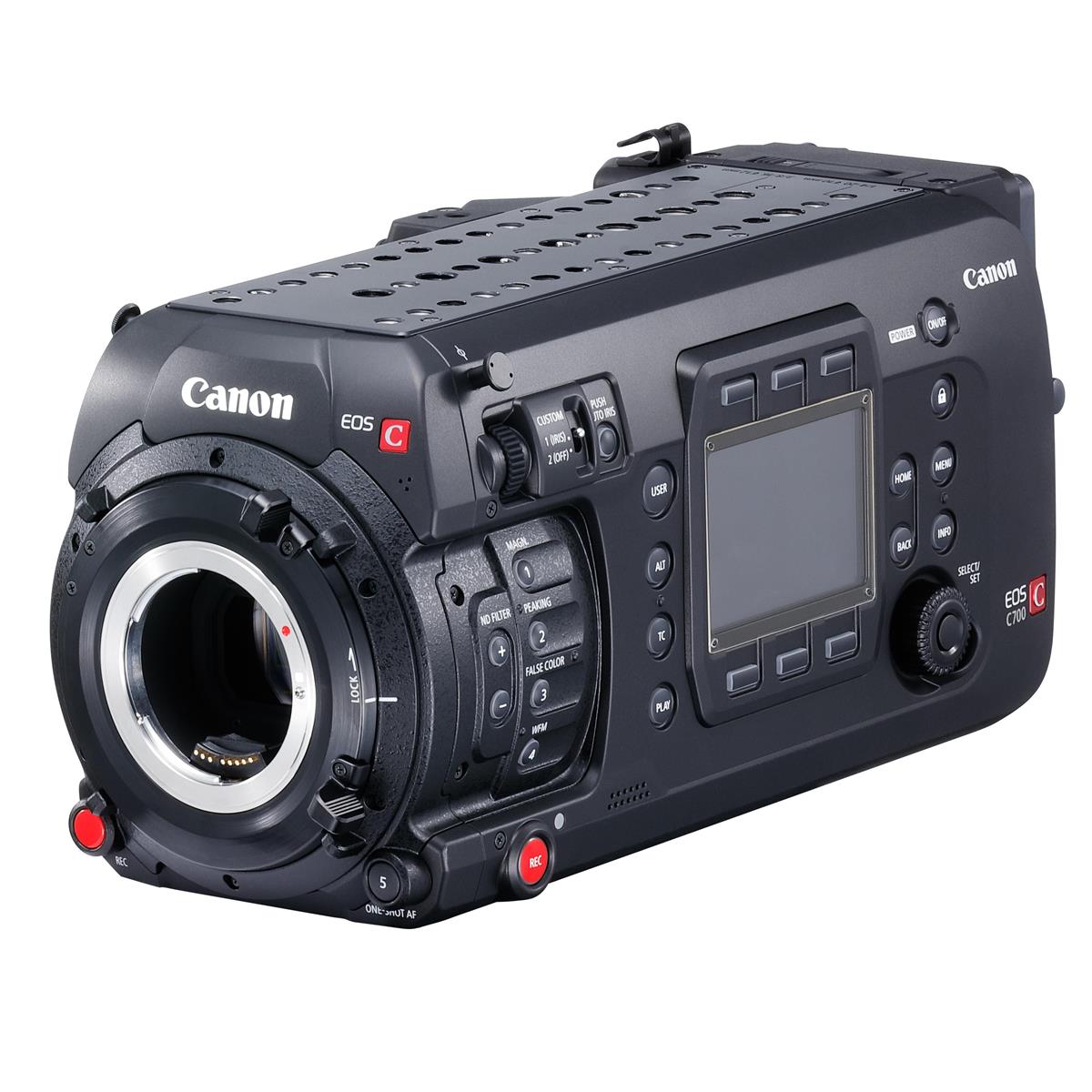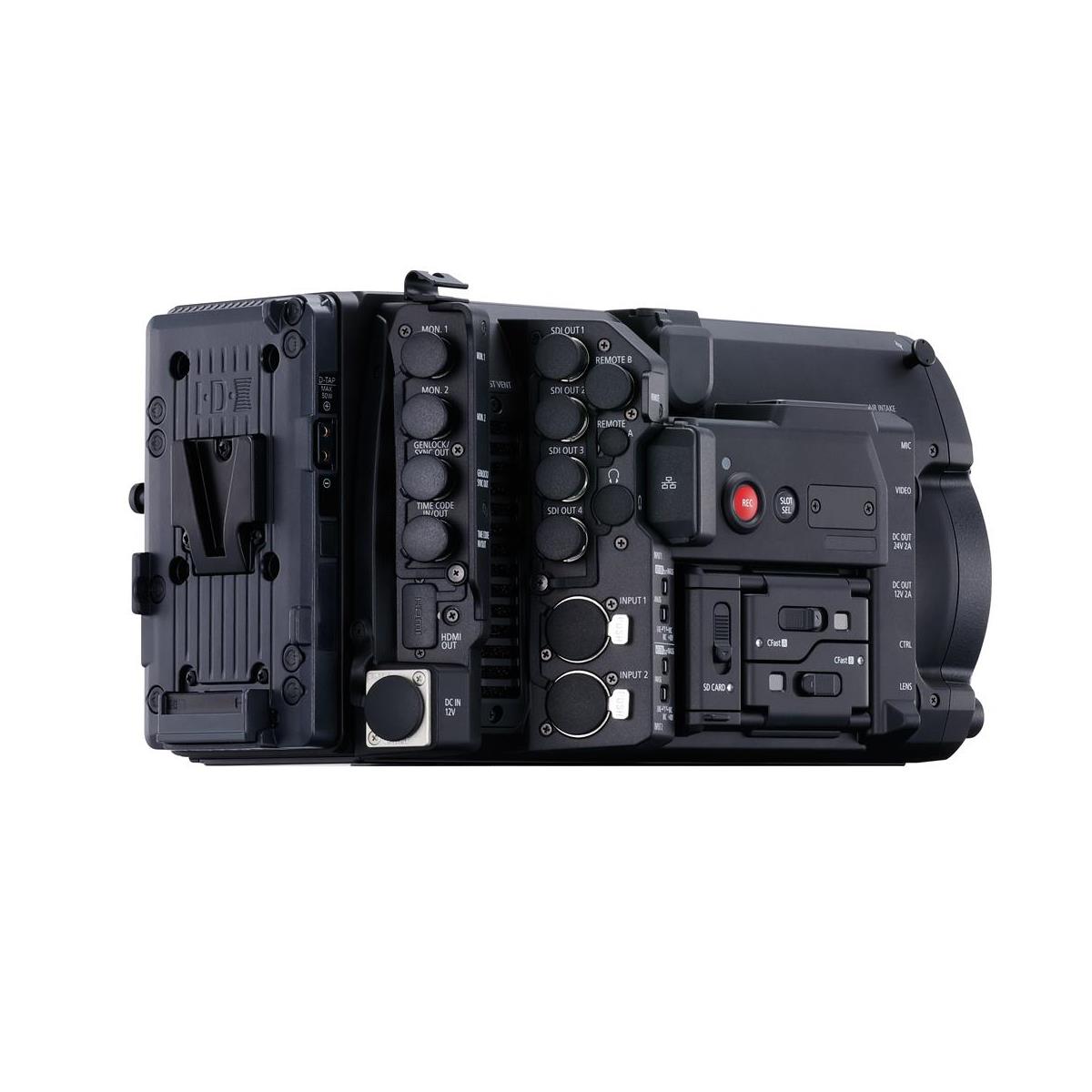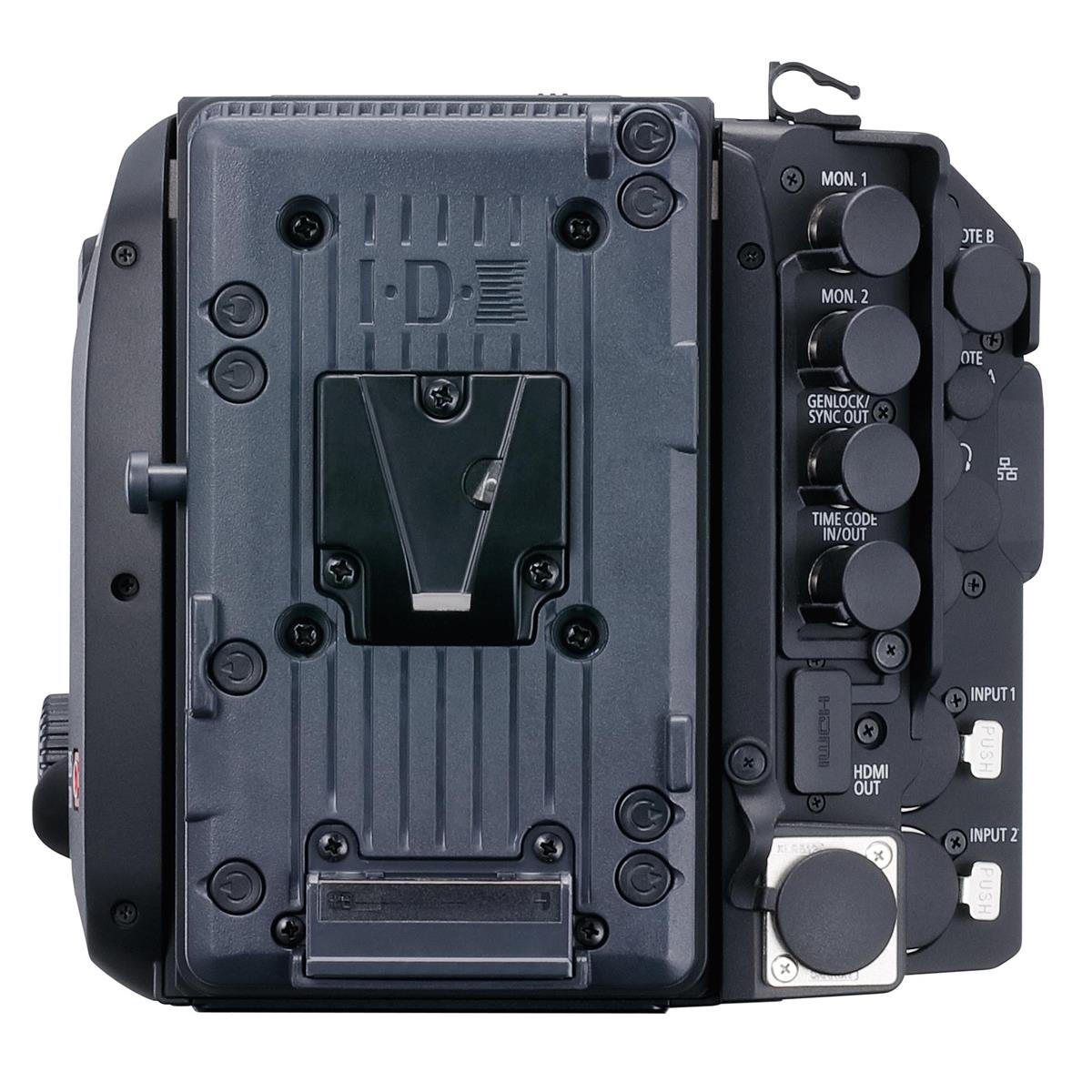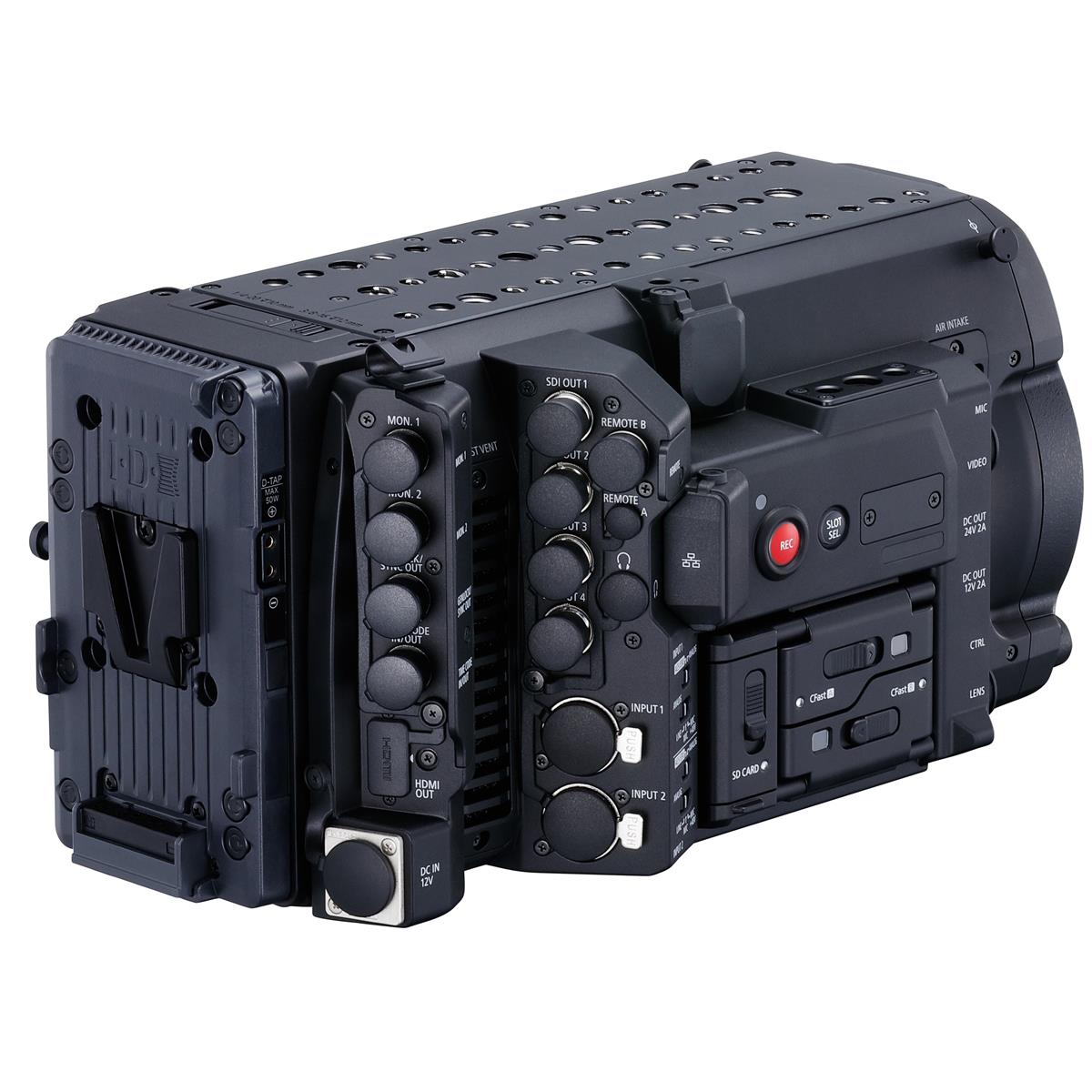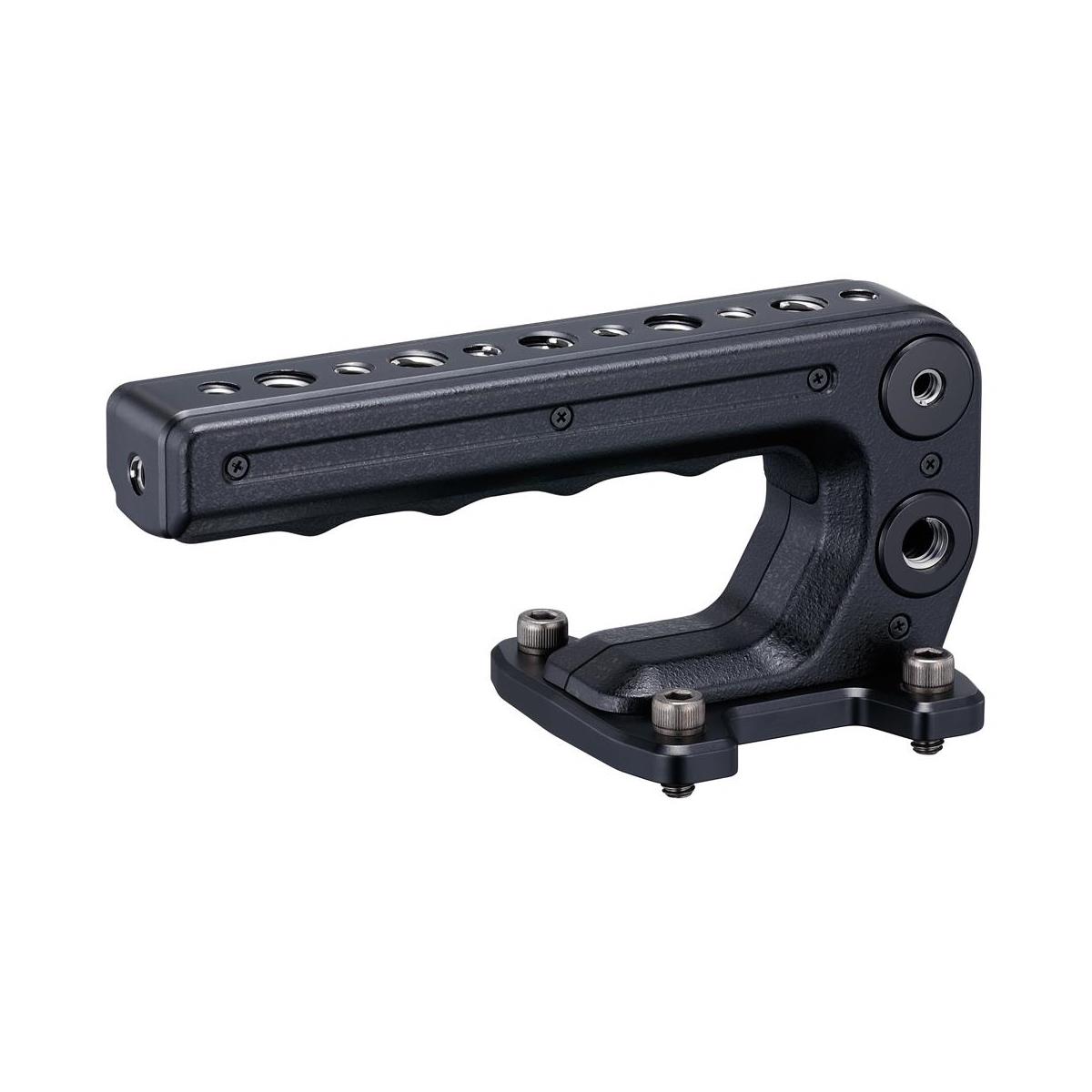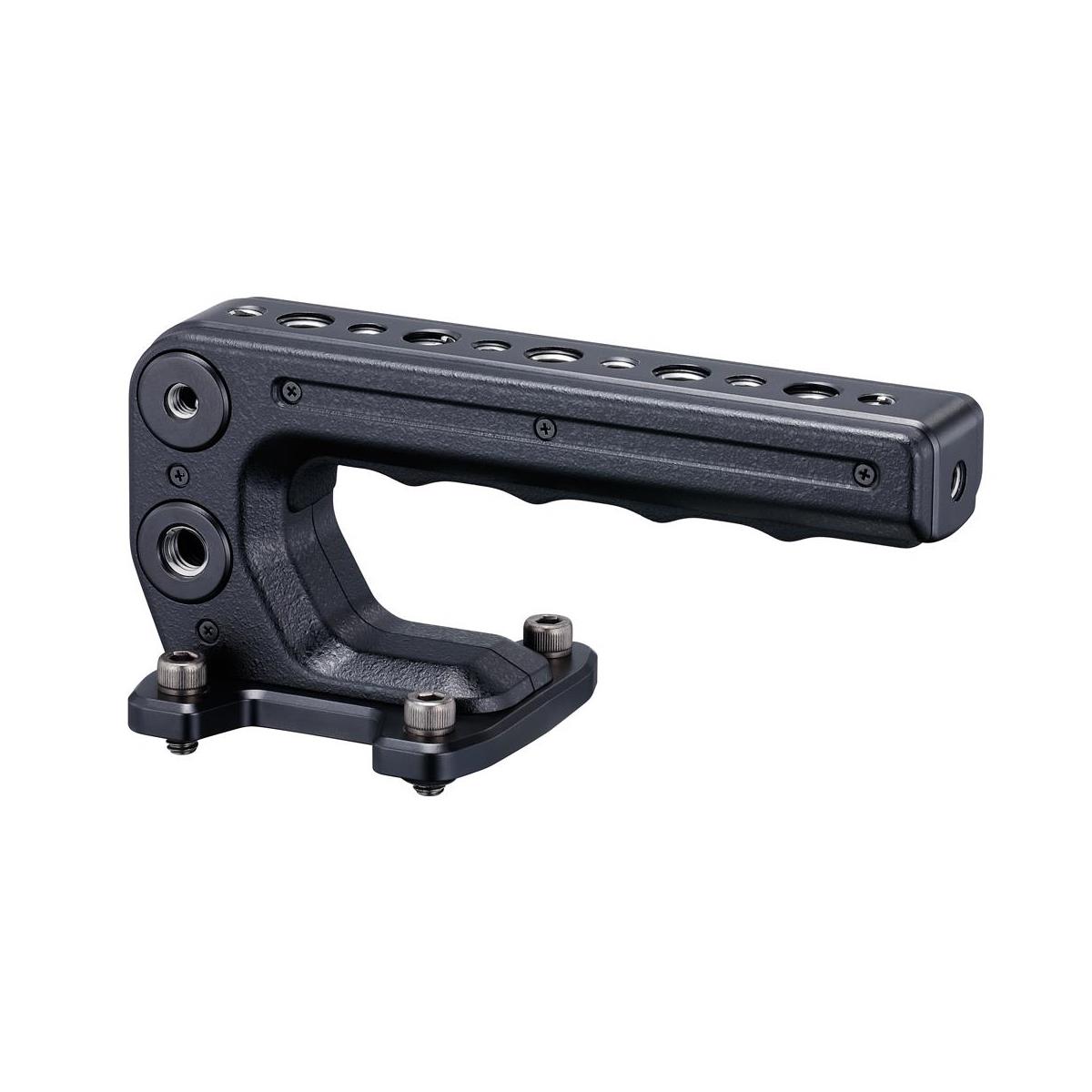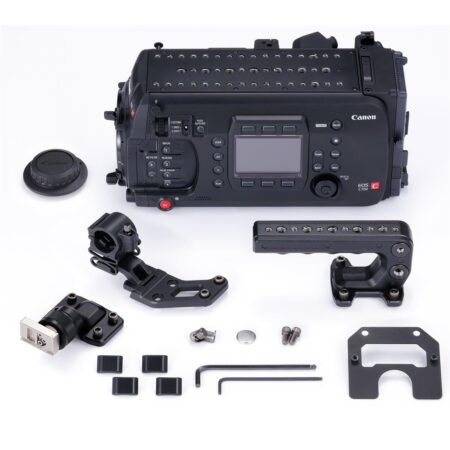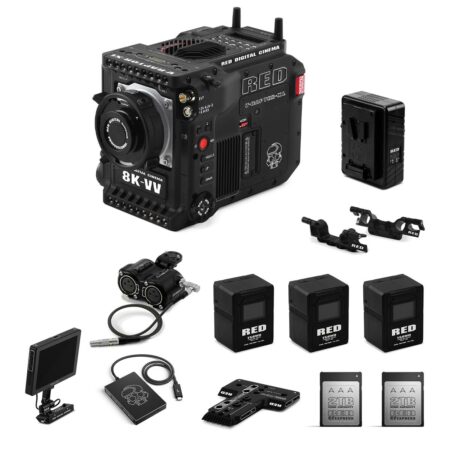Two New 4K Sensor Design
The EOS C700 offers the option of two different sensor designs. The EOS C700 offers a 4.5K CMOS sensor with 15 stops of dynamic range. The standard sensor will be offered in both PL and EF mounts. The EF mount version of the camera features Dual Pixel CMOS AF Technology.
The EOS C700 GS PL features global shutter technology. Global shutter technology is helpful for sports, fast action, concerts and events where it eliminates “jello” and “flash band” artifacts.
The image on a global shutter sensor is captured simultaneously by every pixel on the sensor. Standard CMOS sensors capture the image by scanning the scene from top to bottom. Depending on the speed of the scan, the time delay between the scan of the first line and the last sometimes results in a “jello” effect where straight lines appear curved or wobble as the camera or subject moves. By capturing the entire image at once these artifacts are removed. The EOS C700 GS PL features 14 stops of dynamic range and does not offer Dual Pixel CMOS AF.
Refined Ergonomics & Design
The EOS C700 features a new design when compared to previous Cinema EOS products. The EOS C700 is a full size cinema camera allowing for both traditional studio style and handheld configurations.
The camera body includes built in cheese plates with numerous 3/8-16 and 1/4-20 threaded holes on the top and bottom to easily attach accessories. The top handle attaches in a variety of positions for assisting in achieving optimum balance.
The EOS C700 has an optional 0.7-inch OLED Electronic Viewfinder (EVF-V70). Canon’s first professional grade viewfinder features Full HD 1920×1080 viewing, surround view, view assist and false color. The EVF also has the ability to display an HDR simulated picture with a “stretched” dynamic range for increased shadow detail and highlight retention.
Both sides of the camera can have redundant main displays with menus and controls. A built in control panel on the camera operator side allows quick access to the camera controls. Canon’s optional new Remote Operation Unit OU-700 attaches to the camera’s right side and mimics all the functions of the built-in Main Display. It conveniently flips up for access to the CFast and SD card slots. This allows for camera operation from both sides of the camera making camera adjustment easy for both operator and assistant.
The intuitive six button layout of the menu system allows quick access to frequently used camera functions such as ISO, shutter, slow and fast motion, etc. and may instantly feel very familiar and comfortable to camera operators. Within each quick access function is the ability to access deeper menu options so complete camera control and customization is always accessible while the menu remains clean and easily usable.

The EOS C700 can be used with an optional accessory Shoulder Support Unit SU-15 with industry-standard rosettes on each side and 15mm rods in front. The unit has a comfortable shoulder pad that consists of two sections that can adjust to fit the width of a camera operator’s shoulder. Attaching the shoulder pad to the camera allows for easy handheld operation and still provides a quick release bottom to connect to a tripod.

The EOS C700 has a significantly upgraded power management system to help facilitate connecting with various third party accessories. The camera comes standard with a V-mount plate to accept common professional battery systems. External power supplies of +10 – 34 VDC plug into the camera via an industry-standard 4-pin XLR Style power connector. Camera accessories can be powered via a 24V DC 3-pin and a 12V DC 2-pin connector located on the front of the camera to help with cable management.
The EOS C700 offers a choice of two lens mounts, PL or Cinema Lock EF. The Canon Cinema Lock EF mount is the same ruggedized version first seen on the EOS C300 Mark II.
RAW Recording
With an optional Codex CDX-36150 attached, the EOS C700 can record uncompressed 10-bit or 12-bit 4K RAW up to 120 fps, 2K RAW up to 240 fps, or ProRes 4K up to 60 fps.
The Codex CDX-36150 is made specifically for the EOS C700 and attaches to the rear of the camera and is controlled directly through the cameras menu system.
The Codex CDX-36150 RAW Recorder is attached to the EOS C700 by removing the battery plate at the rear of the EOS C700 and replacing it with the recorder. This modularity of the EOS C700 allows the recorder to be connected securely without wires and act like an integrated part rather than an external accessory. The rear of the Codex recorder has a battery plate with onboard Gold Mount battery connector. External power (10-32 VDC) can also be supplied to the 2-pin connector on the recorder body.
Codex CDX-36150 is an integrated system when attached to the EOS C700. The Codex Recorder allows recording not only 4K RAW, but also ProRes at significantly higher frame rates than internal CFast Cards. When recording RAW files are saved as a .RMF frame sequence in an uncompressed format with no “baked in setting.” Clip development can then be easily adjusted in post using the included Canon Raw Development (CRD) software.
The CDX-36150 uses one Codex Capture Drive 2.0 (1 TB or 2 TB capacity), a familiar and commonly available professional recording media.

Internal CFast & SD Card Recording
The EOS C700 features two CFast 2.0 card slots on the camera right side and one SD card slot. The EOS C700 can record XF-AVC and ProRes (along with metadata) simultaneously to either or both CFast cards. Simultaneous recording is helpful, for example, where one card might go to the post house and the other could be stored safely in the production company’s archive. Relay recording is also possible for situations where changing cards and losing precious seconds is not an option (sporting events, speeches, nature documentaries). At the same time, an 8-bit 4:2:0 Proxy XF-AVC file can be recorded to the SD card for immediate editing. The SD card can also capture JPEG still frames (2048×1080 or 1920×1080), metadata, menus and other information.


Dual Pixel CMOS AF
he EOS C700 Digital Cinema Camera features next generation Dual Pixel CMOS AF Technology. Each pixel in the camera’s CMOS sensor is configured with two photodiodes. Two independent image signals can then be detected at each photosite. By implementing phase-difference AF, smooth focusing is accomplished using Canon EF lenses with much higher speed and accuracy than was possible with previous technologies.
The EOS C700 has rapid one-touch AF (with a push-button) and continuous AF within approximately 80% of the overall image area. Face detection AF is another autofocus mode that can track a person’s face in the frame and maintain focus on them.
To further fine tune AF performance, the EOS C700 offers the ability to set the AF tracking speed and response.
DAF also makes possible the Dual Pixel Focus Guide. Dual Pixel Focus Guide presents the user with a rectangle in the center of the EVF or monitor. The rectangle turns green when the subject is in focus. If the subject is out of focus the box will turn gray and the arrows will indicate which way to adjust the lens to regain focus.
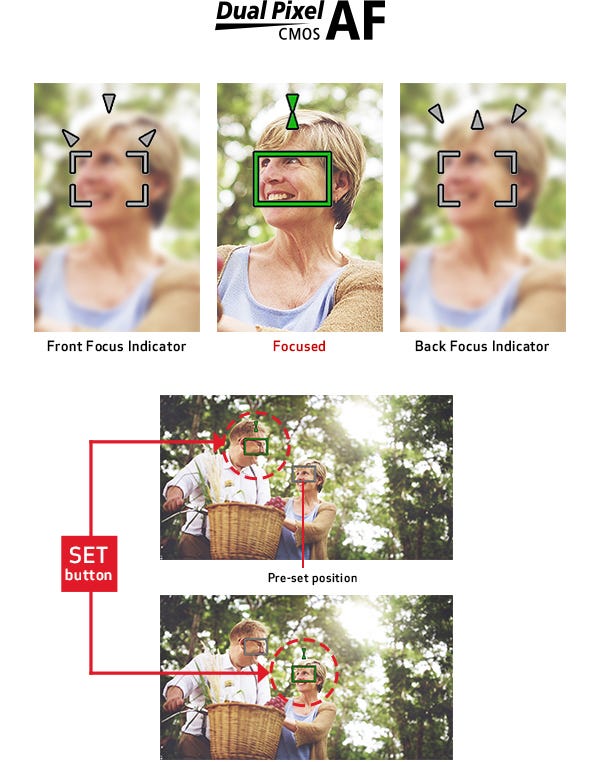
Other Features
Internal ND Filters
The EOS C700 features in-camera ND filters to help save production time and help increase shooting versatility without the need to change filters. The internal ND filters are selected with the ND FILTER + and – buttons on the left side of the camera.
The EOS C700 uses an internal, motorized ND assembly consisting of two rotating disks with glass ND filters between the rear of the lens and the front of the sensor. This combination of ND filters allows 2, 4 and 6 stops of ND in normal mode and 8 and 10 stops in extended mode.

Anamorphic Lens Support
The EOS C700 supports anamorphic format lenses by electronically desqueezing the image in the viewfinder and on connected monitors for viewing. On the sensor users can take advantage of the camera’s full 4K resolution by using 1.3x squeeze anamorphic lenses that cover the full 16×9 area of the EOS C700 sensor. Popular 2x squeeze anamorphic lenses that cover a native 1.2:1 aspect ratio on the sensor can be used as well using a cropped area of the sensor.

B4 lenses
Two B4 mount adapters are available for the EOS C700, B4 to EF adapter (MO-4E) and B4 to PL adapter (MO-4P). Canon’s B4 mount adapter blows up the image slightly, resizing the 2/3″ image circle to approximately 1″ to correspond with native HD resolution on the EOS C700 sensor. This design helps minimize light loss through the adapter, while maintaining depth of field and range of the 2/3″ lens. For power and control with B4 servo lenses the C700 features a 12-pin lens connector on the front of the camera body.

Slow and Fast Motion Recording
The EOS C700 has the fastest frames rates available of any Canon Cinema EOS Camera to date. In addition to the 4K 60P, EOS C700 also features 2K recording up to 120 frame per second and a crop 2K mode featuring up to 240 frames per second.

IP Streaming
IP Streaming enables users to send their video online, in real time, as they shoot. It works with compatible IP decoders, IP streaming software and other devices for live streaming to video websites, news shows, video productions, post production facilities, editing rooms and broadcast stations.
The EOS C700 supports MPEG2-TS with UDP, RTP, RTSP+RTP protocols.
Wireless Remote Capabilities
The EOS C700 can connect to a wireless network using a Canon wireless file transmitter (WFT-E6A / WFT-E8A). Using the WFT Transmitter, users can operate the camera and view live images using a Wi-Fi® connected device with a compatible web browser.
GPS
When an optional Canon GP-E1 GPS receiver is connected to the EOS C700, GPS information can be added to the metadata. This is selected using the menu. GPS position (altitude, latitude, longitude) and time can be recorded where GPS service is available.
RC-V100 Support
Canon’s RC-V100 Remote Controller plugs into the EOS C700 via an RS422 connector on the rear panel. This optional accessory allows image quality adjustments and camera operations to be set from a distance.


